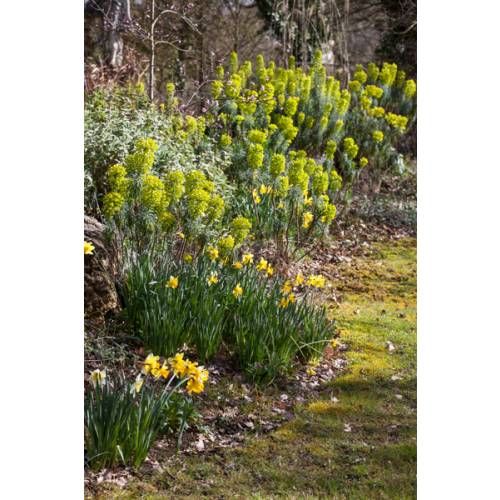
Ecological Garden
Have a go at a natural garden
- Details
-
It's a low maintenance garden which we make the most of: a natural garden has everything going for it! It is a way of contemplating the garden which can be combined with others, like 'permaculture' for example.
The principle of a natural garden consists in reversing the garden's logic. We normally tend to keep nature under control although it would organise itself on its own, according to the site. Under the trees it would be undergrowth, more in the light it would be a meadow for example. Rather than trying to create artificial things (like a perfectly short lawn under the trees), we consider plants which are growing the way which nature would normally obtain. But the choice of plants and their site has to be done by the gardener as weeds are definitely off the agenda!
Favour local varieties
For a more successful and less worry in that type of garden, look at the plants which are growing in the surrounding areas, in the same conditions that your garden offers. These plants are likely to thrive in your garden and make their looking after easier: less watering, no treatment. This is particularly true for hedges which can be troublesome in difficult situations. But it is also true for ornamental flowering beds, particularly those based on shrubs and perennial plants. In listing all the plants which are growing in the vicinity, do not only take into account the wild ones but also their horticultural enhancing, with their coloured leaves or their differently coloured flowers. A natural garden is by no mean a wilderness!
Mow less but better
If a lawn is not incompatible with a natural garden, it is smaller to let some parts growing as a flower field during summer. Mow regularly the lawn areas which need to be kept short, like walkways or places where you enjoy the lawn. Everywhere else cut the grass twice a year, in august and in February. A range of auxiliary fauna will find shelter in the wild, taller grass. You will be able to observe wild flowers which you have never seen in your garden. Beware though, if someone suffers from hay fever, the lot will have to be cut….
Wild flowers
Firstly choose plants able to colonise your garden (gently of course). Plants which reseed in sites where they thrive offer a lot of charm and not a lot of work. You only need to remove the ones which are troublesome, that's all! From one garden to another, it is not always the same plants which reseed. It is your aim to find the ones which are going to thrive in your garden… and theirs! - Photos (4)




